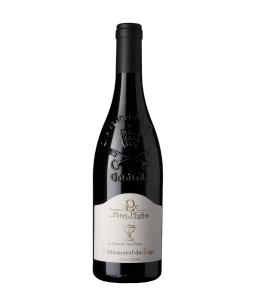Domaine des Pères de l'Eglise
In 1933, the winegrowers and wine merchants of Châteauneuf-du-Pape were the first to impose quality rules relating to the cultivation and production of wines that would bear the name Châteauneuf-du-Pape. The geographic definition of the cultivation area, along with the other regulations, is still in force today, in order to guarantee the wine quality for connoisseurs. The Gradassi family of the Domaine des Pères de l’Église is following the tradition, but with the fresh impetus provided by the young fourth generation.
The fourth generation is represented by Laetitia, who after completing a course in business studies spent two years in Australia and New Zealand, in order to gather experience in wineries there. In 2014, she joined her father and uncle in the family wine estate. However, following her father’s unexpected death, she soon had to assume responsibility for the cellar. Her uncle, Serge Gradassi, predominantly takes care of work in the vineyard.
Since 2001, the best wines have been bottled under their own domaine name. Before then, the wine was sold directly to the trade. The family owns 19 hectares, of which approximately 15 are split into numerous plots spread across the entire Châteauneuf-du-Pape region. Unbelievably, the average age of the vines is 80 years. The family even owns a vineyard which, in 1885, was planted by the great-grandfather as a mixed culture comprising all 13 grape varieties permitted under the appellation.
White wines from Domaine des Pères de l'Eglise
Red wines from Domaine des Pères de l'Eglise
from Domaine des Pères de l'Eglise
A typical and well-known feature of the Châteauneuf-du-Pape is the stony ground with its round galets roulés. It’s astonishing to think that vines could thrive in such a ‘rockery’. But the stones store the heat of the day and slowly release it again through the night, which assists the grape ripening process. However, the region also comprises high quality sandy, clay limestone soil. At about 120 metres above sea level, the Mediterranean climate here is dry and in summer extremely hot. The mistral wind blows often, enabling the grapes to dry quickly after rain.
All grapes are picked by hand and selected according to strict criteria. Depending on the vintage and quality, the wines are matured in barriques, foudres or steel tanks. The white and two red varieties alike delight thanks to the complexity of their flavours as well as their intensity and vitality. A small part of the estate, immediately adjacent to Châteauneuf-du-Pape, comes under the Côtes-du-Rhône appellation. This is where the Châteauneuf-du-Pape’s ‘little brother’ is produced, a Côtes-du-Rhône which, with its wonderful lustre and opulent fruit, offers lots of pleasure at an amazing price. It is not without good reason that the wines produced by this small family domaine are highly regarded by Robert Parker.

Producer

Pievalta
The Pievalta estate is located in the municipality of Maiolati Spontini, in the Marche region, in the heart of the Castelli di Jesi. This area is famous for its small fortified medieval villages as well as for the production of wines made from the Verdicchio grape.

Sette Cieli
It isn’t easy to ascend to seventh heaven. And indeed, the road to the wine estate Sette Cieli is fraught with some difficulties. You might need to take a few detours (seventh heaven isn’t on Google Maps’ radar), but the Ratti family’s wine paradise is more than worth the effort.








